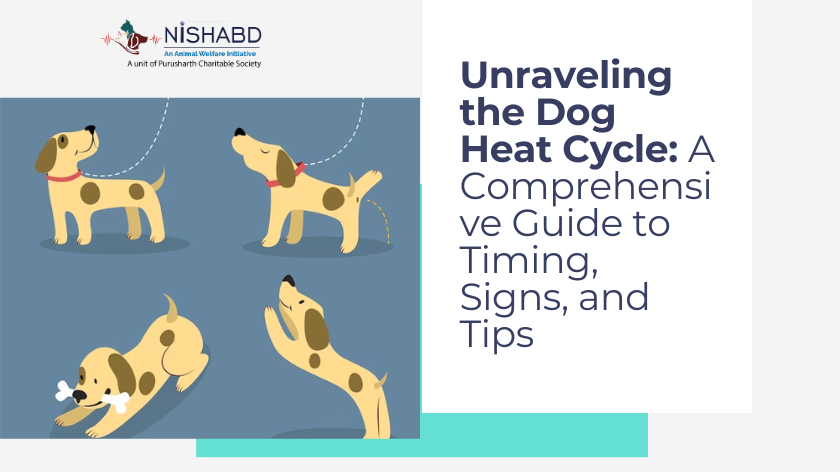Unraveling the Dog Heat Cycle: A Comprehensive Guide to Timing, Signs, and Tips

A dog’s heat cycle, estrus, is a natural part of a female dog’s reproductive system. This cycle can perplex dog owners, especially if it’s their first experience. Understanding the ins and outs of the dog heat cycle is essential for responsible pet ownership. In this guide, we’ll break down everything you need to know, from the timing and signs to valuable tips for caring for your furry friend during this period.
Demystifying the Dog Heat Cycle
“A dog’s heat cycle is a significant event in her life, and pet parents must understand it thoroughly.” – Dr Sarah Mitchell, Canine Reproductive Specialist
- Timing Is Everything
The dog heat cycle typically begins when a female dog reaches sexual maturity, which is around six months of age for small breeds but can be later for larger breeds. It consists of four stages:
-
- Proestrus: The first stage usually lasts around 9 days. You may notice some bleeding and behavioral changes during this time, but your dog is not yet fertile.
- Estrus: This is the fertile stage, lasting about 9 days. Your dog may be receptive to male dogs, and female dog’s bleeding will become more apparent.
- Diestrus: The diestrus phase comes next and lasts around 60-90 days. The dog is not fertile during this time, and the female dog’s body returns to normal.
- Anestrus: The final stage is a resting phase that lasts several months, leading to the next cycle.
- Signs of Estrus
“Understanding your dog’s behavioral and physical signs during estrus is essential for responsible pet ownership.” – Dr Emily Davis, Veterinarian
-
- Swelling of the Vulva: One of the most noticeable physical signs.
- Bleeding: The amount can vary from dog to dog but is generally distinguishable.
- Behavioral Changes: Your dog may become more affectionate, restless, or anxious. She may also seek attention from male dogs.
- The Importance of Preventing Pregnancy
If you’re not planning to breed your dog, taking precautions is crucial. Unwanted litter contributes to dogs’ overpopulation, leading to countless strays and shelter animals. Consult your vet about the best options for birth control or spaying.
- Tips for Managing the Dog Heat Cycle
“With proper care and attention, you can make your dog’s heat cycle more manageable for both of you.” – Dr Michael Turner, Canine Health Expert
- Use Dog Diapers: These can help contain the bleeding and prevent messes in your home.
- Supervise Walks: Keep your dog on a leash during walks to avoid unplanned encounters with male dogs.
- Provide Comfort: Create a comfortable, quiet space where your dog can rest.
- Avoid Dog Parks: Avoid dog parks to prevent mating risks during estrus.
- How to Calculate Your Dog’s Next Heat Cycle
A dog heat cycle calculator can help you estimate when your dog’s next cycle will likely occur. These calculators consider your dog’s previous cycles and the average length of each stage.
“A dog heat cycle calculator can be a useful tool for planning and preparation.” – Dr. Mark Coleman, Veterinary Reproduction Specialist
A Guided Journey
The dog heat cycle is a natural and inevitable part of a female dog’s life. By understanding its stages, recognizing its signs, and taking appropriate precautions, you can ensure your furry companion’s health and happiness while being a responsible pet owner.
Remember that a dog’s heat cycle should be closely monitored, and consulting your vet is always a wise step to ensure your dog’s well-being and to address any concerns you may have.
Read our Article: How to Stop Your Dog From Door Dashing: Tips and Techniques for a Safer Home
